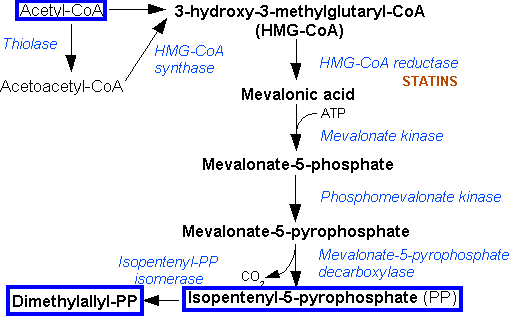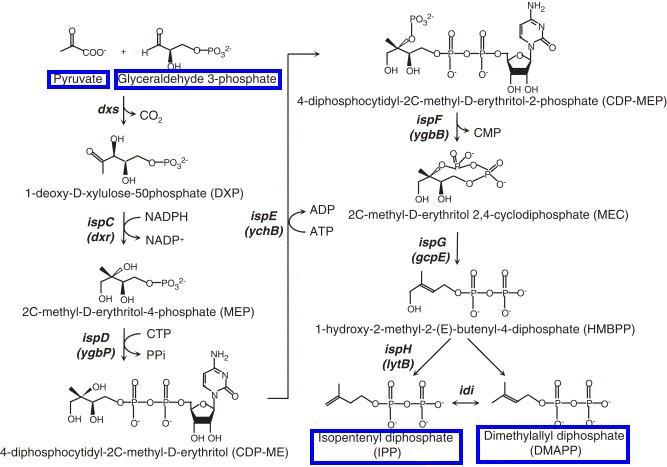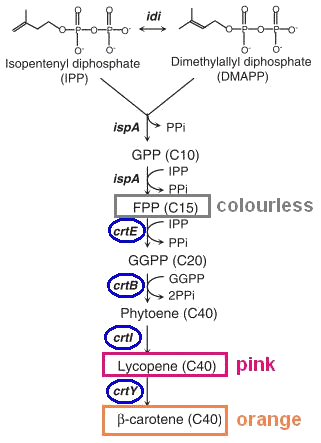Team:Cambridge/Project/Carotenoids/Int
From 2009.igem.org
Categories :
Project :
-
Overview
Sensitivity Tuner
--- Characterisation
--- Modelling
Colour Generators
--- Carotenoids (Orange/Red)
--- Melanin (Brown)
--- Violacein (Purple/Green)
The Future
Safety
Notebook :
Team Logistics :
Carotenoids
Introduction
Carotenoids are organic pigments naturally present in plants, algae and some bacteria. There are more than 600 carotenoids, which can be categorised into xanthophylls (hydrocarbons containing oxygen element) and carotenes (hydrocarbons containing no oxygen). Carotenoids perform a range of functions, including light energy absorption, protection against photo-damage, acting as antioxidants, and as precursor to other organic compounds. In human, for example, beta-carotene is the precursor to vitamin A.
The common starting point for carotenoid synthesis is farnesyl pyrophosphate (FPP), which derives from two precursors, isopentenyl pyrophosphate (IPP) and dimethylallyl pyrophosphate (DMAPP). In general, there are two pathways for synthesising IPP and DMAPP: the Mevalonate Pathway (starting with acetyl CoA) and the Non-mevalonate Pathway (starting with pyruvate and glyceradehyde-3-phosphate). While the Mevalonate Pathway is present in all higher eukaryotes, the Non-mevalonate Pathway is present in E. coli.

a
Part of the carotenoid biosynthesis pathway is shown below (figure adopted from iGEM 2007 Team Edinburgh):
 "
"

